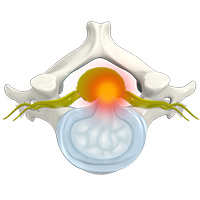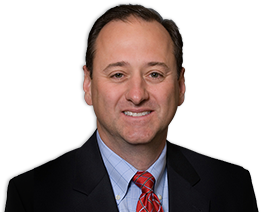Cervical Disc Protrusion

Cervical disc protrusion, commonly known as disc bulge occurs when the spinal discs and associated ligaments are intact, but may form an outpouching that will press on the spinal nerves. This condition causes pain in the neck, shoulder and the arms. Usually, the symptoms include a dull, aching, or sharp pain in the neck or the shoulder blades. Sometimes, the pain may radiate along the arms to the hands and fingers. Tingling sensation and numbness may be felt at the fingertips. It generally develops in individuals in age group of 30–50 years because of trauma to the cervical spine. It is necessary to seek medical care before your symptoms get worse. Initial visit to your doctor may include a physical examination, evaluation of your symptoms and medical history and a neurological examination. A computed tomography (CT) scan or magnetic resonance imaging (MRI) may be advised to assess the disc damage.
Both surgical and non-surgical treatment approaches are available for management of cervical disc protrusion.
The first line of treatment your doctor may suggest is conservative methods such as cold or heat therapy. During the first 2-3 days, applying ice (wrapped in a towel) can reduce swelling and pain by limiting the blood flow. Heat therapy can be started after 3 days to increase the blood circulation and relax the soft tissues. Cold/heat therapy should not be continued for more than 20 minutes each time. Medications such as nonsteroidal anti-inflammatory drugs (NSAIDs), muscle relaxants may be prescribed. Physical therapy treatments which include massage, stretching exercises and neck traction may be recommended. Most of the time, these self-care measures alleviate your pain in about 4-6 weeks. If the condition is severe that cannot be treated with conservative approaches or in case of spinal cord compression your doctor may recommend for surgery. Cervical disc protrusion can be corrected by partial discectomy, discectomy (removal of disc), or laminotomy. These spine surgeries can be done using the minimally invasive method involving smaller cuts and tiny instruments.











